Ever wondered how do we use wind energy in everyday life? If yes, then you are at the right place at the very right time. Because in this exclusive article, I am going to explain the top 6 common uses of wind energy that we see generally see in our daily life. But before, going ahead, let me let you what is wind energy anyway…!!!
By definition, wind energy is nothing but the energy of wind we primarily use to generate electricity or in some cases, for doing different types of mechanical work. Wind energy is practically inexhaustible. Therefore, it comes under the category of renewable resources.
How is Wind Energy Used in Everyday Life – Top 6
In reality, there can be so many applications of wind energy. Out of all, I will be discussing with you the top 6 common uses of wind energy that we see in our daily life. Therefore, without wasting any more time, let’s dive right in…!!!
- Wind Farm for Electricity
- Wind Pump
- Battery Storage
- Windmill
- Wind-Powered Vehicles
- Composite Power Plants
Wind Farm for Electricity Generation
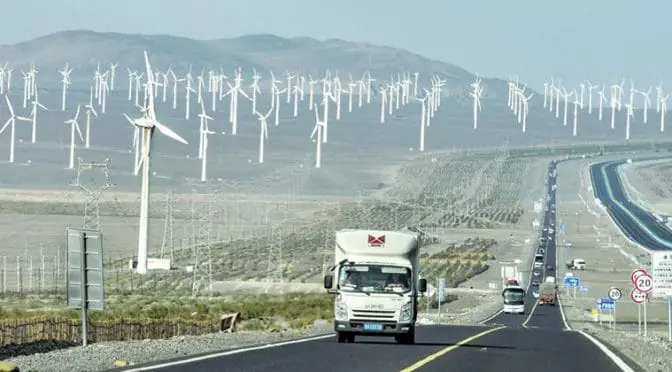
One of the most sustainable uses of wind power is Wind Farms for Electricity Generation. A wind farm is a type of power plant where many wind turbines are used to produce electricity.
The electricity we produce in wind farms has almost zero carbon footprint. Of course, the installation of these gigantic wind farms would easily cost thousands of dollars. However, once installed, they can drastically reduce our dependence on fossil fuels for electricity generation.
Not to mention, we have been using wind energy for electricity since the late 19th century. As per the recorded historical data, the first-ever wind turbine for generating electricity was built in Scotland in July 1887 by Prof James Blyth of Anderson’s College, Glasgow (the precursor of Strathclyde University).
How does a wind turbine work?
A system that produces electricity by converting the potential energy of the wind into useful work to generate electricity is known as a wind power plant or simply a wind turbine. Here is how wind turbines produce electricity!!!
Step One
Wind falls on the wind turbine.
Step Two
As the wind touches the turbine, the potential energy of the wind spins the blades of the turbine.
Step Three
As the wind starts to rotate the blades of the wind turbine which in turn starts off the electric generator to produce electricity.
Wind Pump
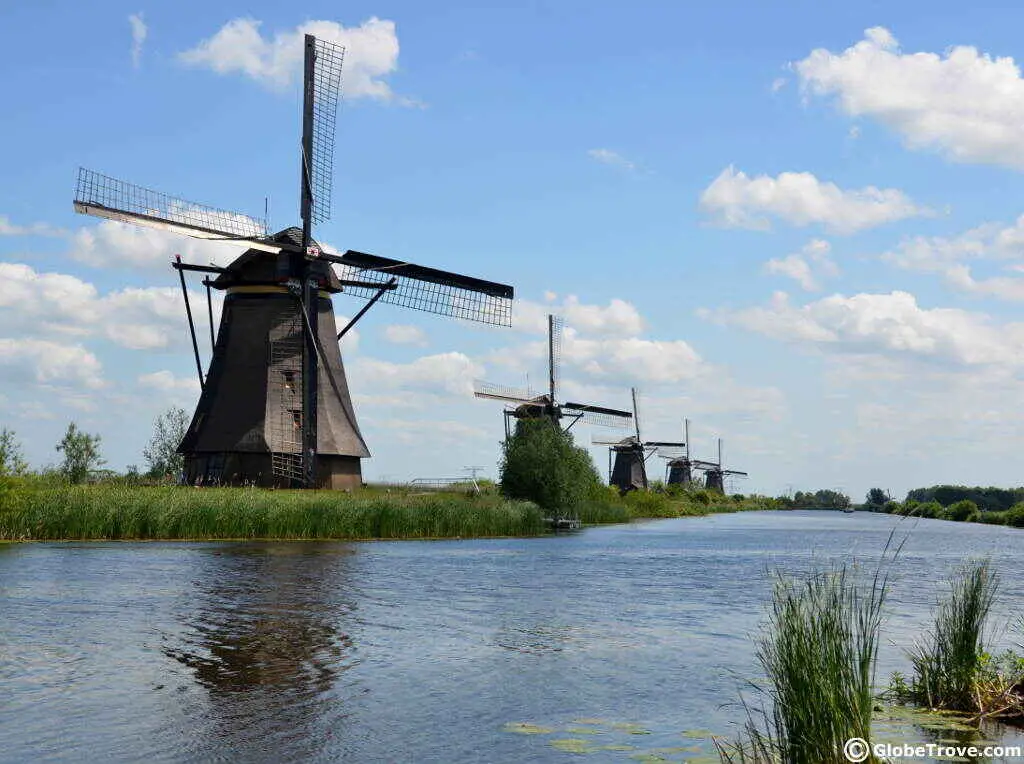
Wind pumps are, in fact, one of the oldest applications of wind energy in daily life. As per the historical data, back in the 9th century, windpumps had been extensively used in middle eastern and central Asian countries like Iran and Afghanistan. And, with time, this technology got transferred to China, India, and even European countries.
Just because of their efficiency, currently, they are not widely in use like in older times. In today’s world, they are replaced with fossil fuel-powered water pumping systems. However, because of the climate issue, so many countries have taken the initiative to switch back to wind-powered water pumping systems, primarily in rural areas.
In fact, they are especially attractive for use at remote village sites where electric power is not available. Since they are not efficient enough, they are basically in use to provide water for human use as well as drinking water for large cattle stocks.
How does a wind pump work?
The working principle behind any wind-powered system will remain the same. Just the way we use it will change.
Step One
Wind falls on the turbine of the wind pump.
Step Two
As the wind touches the turbine, the potential energy of the wind spins the blades of the turbine.
Step Three
The spinning blade starts the rotor which in turn drives the (water) pump to extract the groundwater.
Editor’s Choice:
Battery Storage
As I said earlier, installing a complete wind farm would cost thousands of dollars. So, what should we do now? Should we continue to power our homes with the help of non-renewable resources? Well, the answer is NO.
Instead of installing a full-fledged wind farm with hundreds and thousands of wind turbines, we should rather start buying small and affordable turbines that can easily charge our batteries for electrical equipment like electric scooters, and lawnmowers.
In fact, thanks to next-gen technologies, nowadays with the help of small wind turbines we can also charge our day-to-day electronic gadgets like cell phones, tablets, or laptops. Obviously, installing these small wind turbines won’t be able to totally replace non-renewables.
But I would say that even the smallest contribution will one day make our environment clean. Therefore, I will formally request you switch to wind power. Just to mention, the working principle of small wind turbines for battery storage is the same as wind farms for electricity generation. Therefore, I will be skipping this part here.
Wind Mill
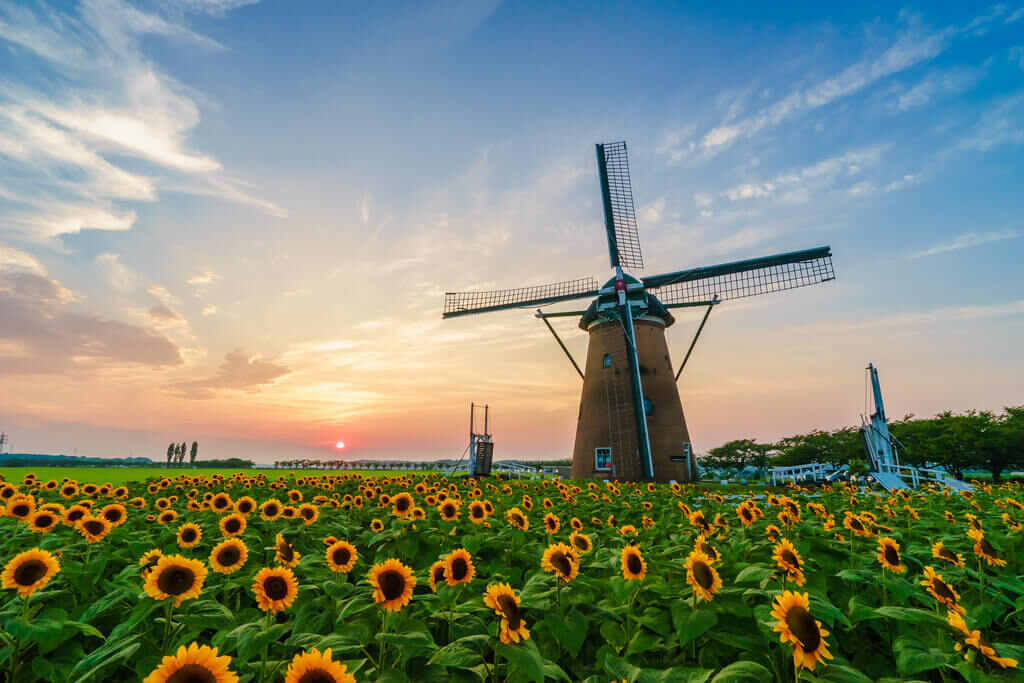
Like Wind Pumps, windmills have also been used for ages. Their first use has been recorded in Greater Iran (modern-day Iran and Afghanistan) in the 9th century. Again like Wind Pumps, this technology of grinding grains with the help of wind energy spread across China, India, and European Countries from there.
They were basically used for grinding cereals and grains to make bread or chapatis. However, after the industrial revolution, they were eventually replaced by steam and internal combustion engines.
How does a windmill work?
A typical windmill consists of three mechanical parts. A turbine with lots of blades, a driving shaft, and a set of two millstones (one fixed and one moving) to crush grains. Here I am just mentioning the essential parts. There are some others too.
To make things easy for you, I am just neglecting them. As you already know, the working principle behind any wind engine will remain the same. Just the way we use it will change. Let’s see how this type of wind engine works…!!!
Step One
Wind falls on the turbine (having lots of blades) of the windmill.
Step Two
As the wind touches the turbine, the potential energy of the wind spins the blades of the turbine which in turn rotates the driving shaft.
Step Three
One end of the driving shaft is connected to a turbine. The other end is connected with the moving millstone that is kept above the fixed millstone. So, the wind rotates the blades of the turbine which, in turn, rotates the driving shaft that, in turn, rotates the moving millstone above the fixed one.
Step Four
Now just pour some grain within a hole in the rotating millstone, it will start to grind the grain into flour. This is how a windmill traditionally grinds a grain or any kind of cereal.
Wind-Powered Vehicles
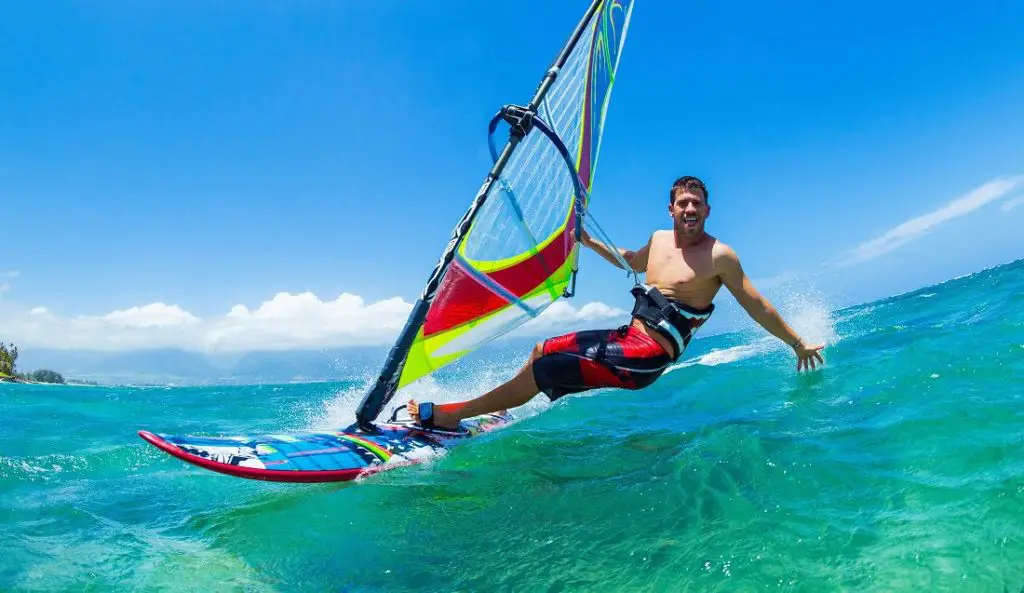
As per the available historical data, humans have been using the power of wind for sailing ships for millennia. However, after the evolution of steam engines and internal combustion engines, we have totally neglected them.
Apart from sailing in the sea, we have so many adventurous sports that basically operate due to the energy of the wind.
For example, we do windsurfing due to the power of the wind. Since windsurfers do not require any kind of fossil fuel engines to operate, they are classified as highly environmentally friendly in nature.
Composite Power Plants
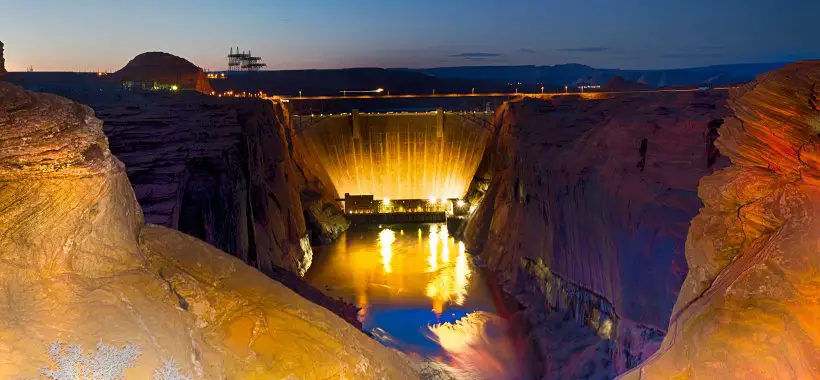
One of the most significant disadvantages of wind energy is that they are not a continuous source of energy. Don’t get me wrong…!!! I am not saying that it’s a non-renewable source of energy. All I am saying is that they are not available at any time, all year round. Therefore, it’s not possible to generate electricity continuously 24 hours a day using wind power.
In other words, what I mean is that on some days, the speed of the wind is the lowest. On some days, on the other hand, is higher than the average. Therefore, the efficiency of the wind farms is always fluctuating resulting in lower output. So, what should we do now?
Should we stop using wind farms to generate electricity? The answer is NO. Instead of switching back to fossil fuel power plants, we should rather connect wind farms with the nearest hydroelectric power plant. They complement each other quite fashionably. Here is how this works…!!!
When the speed of the wind is at its lowest, a hydroelectric power station can operate at its fullest. On the other hand, when the speed of the wind is higher than average, hydropower plant can temporarily hold their water allowing the energy of the wind to generate electricity at its fullest.
Editor’s Choice:
- Renewable Resources: Definition, Examples, Advantages, Disadvantages
- Nonrenewable Resources: Definition, Examples, Advantages, Disadvantages
- Difference Between Renewable and Nonrenewable Energy Resources
- Applications of Renewable Resources in Daily Life – Top 6
- Examples of Non-renewable Resources (Uses, Pros & Cons)
Some other Uses of Wind Energy:
Apart from the above-mentioned applications or uses, I am also mentioning some of a few here.
- Kite Boating
- Kite Flying
- Snowkiting
- Kite Jumping
- Kite Surfing
- Sail Biking
- Kite Surfing
- Wind Surfing, etc.
That’s it for this post. If you like this article, share it if you like, like it if you share it. You can also find us on Mix, Twitter, Pinterest, and Facebook. Hey man, If you have come this far, do give us feedback in the comment section. It would make my day. You can also make a donation. Your donations will help us to run our website and serve you BETTER. Cheers!!!
